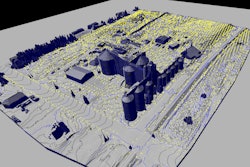
Grain and farm supply cooperatives are facing sharplyhigher property insurance premiumsdue to the increasing frequency and severity of weather-related disasters.
U.S. property and casualty insurers have responded to the increase in natural catastrophe claims by raising prices, increasing deductibles and tightening coverage terms and conditions. For agribusinesses, insurance expense growth has outpaced total operating expense growth by a wide margin since 2021.
According to anew report from CoBank’s Knowledge Exchange, commercial property insurance rates will remain elevated for the next 12 to 18 months as insurers attempt to make up for recent year losses and pursue rate adequacy in an environment of higher costs.
The CoBank report outlines strategies grain and farm supply cooperatives can evaluate to mitigate higher costs for insuring grain elevators, input storage buildings and other facilities.
“Over the past three years, cooperatives and their property-casualty insurers have faced a perfect storm of excessive property losses due to floods, tornados and a host of severe weather events,” saidKenneth Scott Zuckerberg, lead farm supply and biofuels economist for CoBank. “And those losses have come during an inflationary period when the costs for labor and building materials needed to repair physical structures were much higher.”
Three years of above-average losses
In 2022, the cost of U.S. weather and climate disasters totaled $170 billion. That’s up from $155 billion in 2021 and $114 billion in 2020. The magnitude of three consecutive years of above-average losses has driven one Omaha-based underwriter of property insurance for grain and farm supply cooperatives to exit the market. Other agribusiness insurers have restricted coverage.
Zuckerberg estimates that U.S. agribusinesses paid 40% to 60% more in risk-adjusted premiums so far this year. And cooperatives that experienced property losses between 2020 to 2022 saw rates increase by as much 100%, along with higher deductibles and lower total coverage limits.
“While there’s no silver bullet solution, there are steps cooperatives can take to manage their premiums,” said Zuckerberg. “Improving internal loss control and purchasing property coverage through a hybrid insurance program are among the options co-ops can evaluate in consultation with their accounting, legal and risk management advisors.”
Analytic software programs can improve loss control
Cooperatives may be able to reduce property insurance costs by deploying newer analytic software programs that enhance internal risk management and improve loss control. These programs give cooperatives more ability to document improved risk management and negotiate coverage that closely aligns with their exposure, rather than the broader industry at large.
Participating in a hybrid insurance program created and managed by a specialty carrier or broker is another option available to cooperatives. Hybrid programs blend the benefits of traditional and non-traditional insurance.
The non-traditional component of these programs gives cooperatives the opportunity to exercise greater control over their own risk management practices and the ability to self-insure more risk. The traditional component provides the security of using an established insurance company that has consistent reinsurance support and less capital intensity.





















